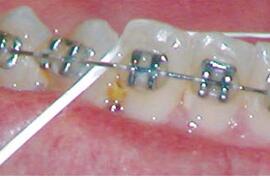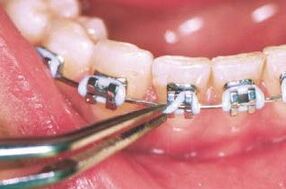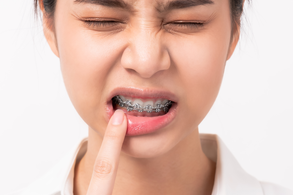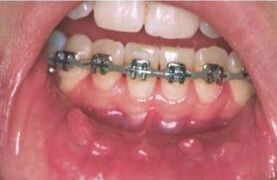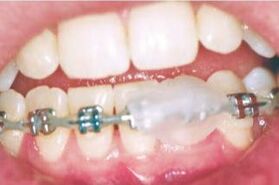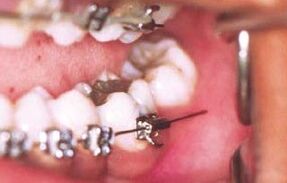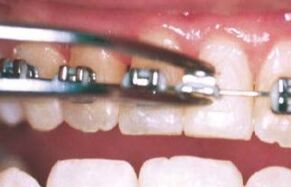EMERGENCY TREATMENTS
Orthodontic concerns are typically not urgent, but there are instances where prompt attention is necessary.
In the case of a life-threatening emergency, dial 911 or head to the nearest emergency room. However, if your braces or orthodontic appliance is causing discomfort, breakage, or other issues, it's advisable to contact our office. Some concerns may be resolved through a phone consultation or by sending pictures, while others may require an in-person visit to prevent additional costs and treatment delays.
Our advice is not to panic; instead, reach out as soon as possible. Familiarize yourself with the names of your braces' components or be ready to describe the troublesome part(s).
Wondering what qualifies as an orthodontic "emergency"? It's anything that cannot or should not wait until your next scheduled appointment. Here are some examples and guidance on what to do in these different situations.
In the case of a life-threatening emergency, dial 911 or head to the nearest emergency room. However, if your braces or orthodontic appliance is causing discomfort, breakage, or other issues, it's advisable to contact our office. Some concerns may be resolved through a phone consultation or by sending pictures, while others may require an in-person visit to prevent additional costs and treatment delays.
Our advice is not to panic; instead, reach out as soon as possible. Familiarize yourself with the names of your braces' components or be ready to describe the troublesome part(s).
Wondering what qualifies as an orthodontic "emergency"? It's anything that cannot or should not wait until your next scheduled appointment. Here are some examples and guidance on what to do in these different situations.
HOW DO I TURN MY EXPANDER?
|
|
To activate the orthodontic palatal expander, insert the key into the hole of the screw, push towards the back of the mouth until you see the next hole appear, then remove the key. Please note that we have no affiliation with the people who made this video (BracesQuestions), and their website seems to be no longer operable.
|
FOOD CAUGHT BETWEEN TEETH
LIGATURES COME OFF
|
Tiny rubber bands or small, fine wires, known as ligatures, hold the wire to the bracket. If a rubber ligature should come off, you may be able to put it back in place using sterile tweezers. If a wire ligature comes loose, simply remove it with sterile tweezers. If the wire ligature is sticking out into the lip but is not loose, it may be bent back down with a Q-tip or pencil eraser to eliminate the irritation. Of course, when one ligature pops off or breaks, others may follow. Be sure to examine all ligatures.
If you have missing or broken ligatures, contact our office. If a rubber or wire ligature is lost, notify us so that we may advise whether you should be seen. |
DISCOMFORT
MOUTH SORES
|
Some patients are susceptible to episodes of mouth sores. While braces do not cause them, they may be precipitated or exacerbated by an irritation from braces. One or several areas of ulceration of the cheeks, lips or tongue may appear. This is not an emergency, but may be very uncomfortable. Prompt relief may be achieved by applying a small amount of topical anesthetic (such as Orabase or Ora-Gel) directly to the ulcerated surface using a Q-tip or cotton swab. Reapply as needed.
|
IRRITATION OF LIPS OR CHEEKS
|
Sometimes new braces can be irritating to the mouth, especially when eating. A small amount of non-medicinal relief wax makes an excellent buffer between the metal and your mouth. Simply pinch off a small piece and roll it into a ball the size of a small pea. Flatten the ball and place it completely over the area of the braces causing irritation. You may then eat more comfortably. If the wax is accidentally ingested, it’s not a problem. The wax is harmless.
|
PROTRUDING WIRE
|
Occasionally, the end of a wire will work itself out of place and irritate the mouth. Use a Q-tip or pencil eraser to push the wire so that it is flat against the tooth. If the wire cannot be moved into a comfortable position, cover it with relief wax (see Irritation of Lips or Cheeks above for instructions on applying relief wax) and let us know. In a situation where the wire is extremely bothersome and you will not be able to see us soon, you may, as a last resort, clip the wire. Reduce the possibility of swallowing the snipped piece of wire by using folded tissue or gauze around the area. Use a pair of sharp clippers and snip off the protruding wire. Relief wax may still be necessary to provide comfort to the irritated area.
|
LOOSE BRACKETS, WIRES, OR BANDS
|
If your brackets come loose in any way, call us to determine appropriate next steps. Brackets are the parts of braces attached to teeth with a special adhesive. They are generally positioned in the center of each tooth. The bracket can be knocked off if you eat a hard or crunchy foods or if your mouth is struck during activity. (We encourage all patients, especially those with braces, to wear a protective mouth guard while playing sports). If the bracket is off center, the adhesive may have failed. We recommend that you immediately notify us to determine the course of action. If the loose bracket has rotated on the wire and is sticking out and you cannot immediately be seen at our office, you can do a temporary fix to alleviate discomfort and prevent further damage. However, take care to prevent swallowing or other injury. To put the bracket back in place, use sterile tweezers to slide the bracket along the wire until it is between two teeth. Rotate the bracket back to the proper position, then slide it back to the center of the tooth.
|
PIECE OF APPLIANCE IS SWALLOWED
|
This is rare, but when it does happen, it can be fairly alarming. Have the patient remain calm. If he or she is coughing excessively or having difficulty breathing, the piece could have been aspirated. If you are able to see the piece, you may carefully attempt to remove it. But do not make the attempt if you could cause harm. If appropriate under the circumstances, examine the patient’s braces for problems that may result from the missing piece, such as looseness or irritation, and treat as specified above. If you are unable to see the piece and believe it may be have been aspirated, notify us immediately.
|

